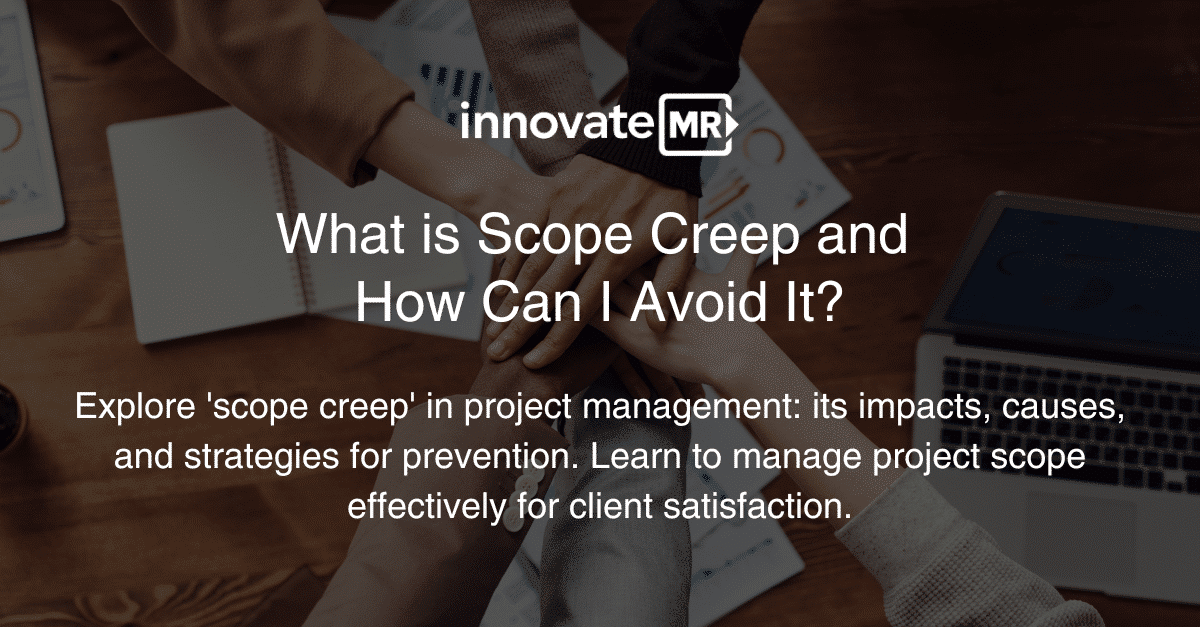
Understanding Scope Creep
In project management, scope creep happens when a project expands beyond its original goals without proper planning or approval. This could mean additional deliverables, extended timelines, or higher costs—often without an updated agreement between stakeholders.
Left unchecked, scope creep can derail deadlines, increase expenses, and reduce overall quality. The most effective way to prevent this risk is through scope change control, a structured process for reviewing, approving, and managing scope changes.
Scope change control ensures that any requested modifications are evaluated for their impact on:
- Budget
- Timeline
- Resources
- Project objectives
By putting this process in place, teams can adapt to changes while keeping projects aligned with client expectations and business goals.
Why Does Scope Creep Happen?
Scope creep is common in fast-moving industries like market research, product development, and digital projects. Some of the most frequent causes include:
- Unclear project requirements – When the initial scope isn’t defined in detail.
- Client requests mid-project – Adding new features or tasks without a formal approval process.
- Poor communication – Stakeholders not aligned on what’s included in the scope.
- External changes – Market shifts, competitor moves, or updated regulations.
Whatever the reason, scope creep usually comes down to a lack of structured scope change control.
Real-World Example of Scope Creep
Imagine a research firm kicks off a project to conduct focus groups and online surveys to test a new product. The project is budgeted for six weeks with a fixed cost.
Halfway through, the client requests additional deliverables: in-depth interviews and a competitor analysis. Wanting to please the client, the team agrees—but they don’t update the project timeline, resources, or budget.
The result?
- Delays: The project runs weeks past the original deadline.
- Budget Overruns: Costs exceed the client’s expectations.
- Client Frustration: Insights arrive too late to be useful.
This situation could have been avoided with a formal scope change control process, where new requests are reviewed, costed, and approved before work begins.

How to Prevent Scope Creep with Scope Change Control
Here are four proven strategies to keep projects on track:
1. Define the Scope Clearly
Start with a detailed project plan that includes:
- Goals and objectives
- Deliverables
- Timelines
- Team responsibilities
Share this plan with all stakeholders and update it regularly to avoid misunderstandings.
2. Establish a Formal Scope Change Control Process
Any new request should go through a structured process:
- Define the change clearly
- Assess its impact on scope, budget, and deadlines
- Get approval from all stakeholders before execution
This creates accountability and manages expectations.
3. Communicate Consistently
Keep communication open and transparent. Regular updates, check-ins, and clear documentation ensure everyone understands the current scope and any approved changes.
4. Monitor Progress and Flag Risks Early
Use checkpoints and status reports to identify risks before they escalate. Encourage your team to speak up if new tasks are being added informally or if timelines are at risk.

Conclusion
Scope creep is one of the biggest challenges in project management—but it doesn’t have to derail your work. With scope change control, you can adapt to evolving client needs while protecting budgets, timelines, and deliverables.
By defining scope clearly, implementing a structured change control process, maintaining open communication, and monitoring progress closely, you’ll keep projects on track and clients satisfied.
About InnovateMR – InnovateMR is a full-service sampling and ResTech company that delivers faster, quality insights from business and consumer audiences utilizing cutting-edge technologies to support agile research. As industry pioneers, InnovateMR provides world-class end-to-end survey programming, targeted international sampling, qualitative and quantitative insights, and customized consultation services to support informed, data-driven strategies, and identify growth opportunities. Known for their celebrated status in customer service and results, InnovateMR combines boutique-level service with extensive global reach to achieve partner success.


